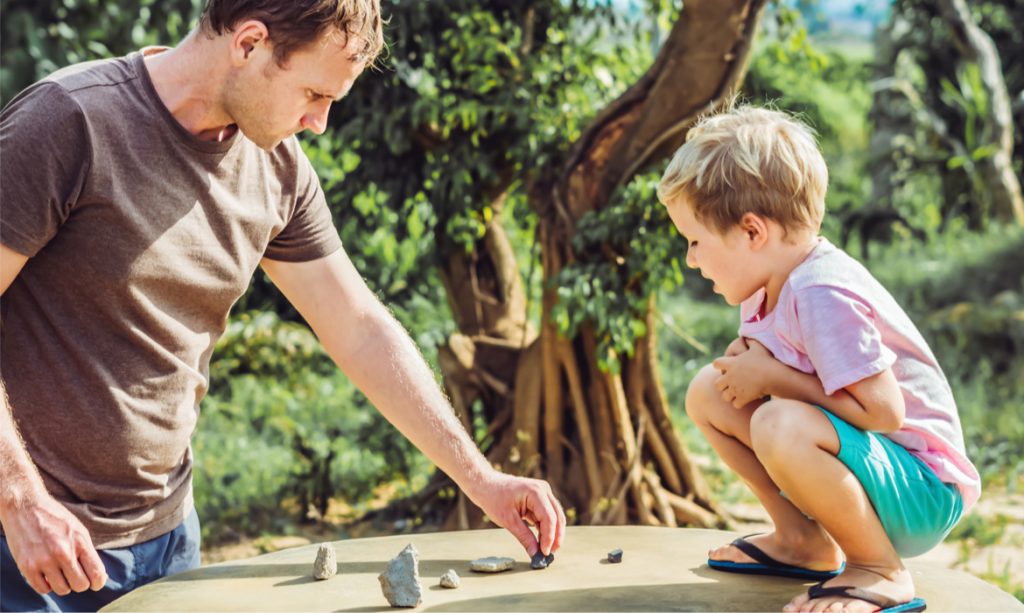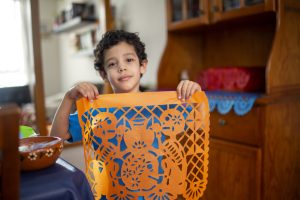- There are ways to make math engagement meaningful and positive for all children.
- Math is full of opportunities for creativity and storytelling.
- Showing interest in children’s thinking supports their early math development.
My two children are very different and have been from the moment they were born. They have different food preferences, different fears, and different ways of showing affection. They also have very different interests: One child loves following instructions to make things like origami figures. The other prefers to create from her own imagination, and always has an idea for what to do with an empty box.
Many of us have developed ideas about what people who are good at math like to do. Because of this, as children’s interests and personalities develop, we may think that that child is or is not a “math person,” based on whether they enjoy things we associate with someone who is good at math. Not all children are equally open to efforts from their teachers and caregivers to engage in math activities. As a result, and starting from a very young age, children receive different messages about their ability to be successful in math. This can also mean they receive different opportunities to learn math.
The truth is that all children have the capacity to practice and enjoy math. We may think of people who do well in math as being logical, orderly, and analytical. But math is also full of opportunities for creativity, communication, and storytelling. Instead of assuming that a child who shows less early interest in math activities is not naturally a math person, we can instead support the child’s potential to learn math. This will help us be thoughtful about engaging the child in positive, meaningful experiences with math.
Here are strategies for connecting with a young child who does not show an early interest in math activities.
1. Connect math learning to their interests.
While some children enjoy practicing math for math’s sake, other children are more motivated when math is connected to something they are already interested in or doing.
My older child loves numbers and operations; he will happily figure out the answer to any problem I pose. My younger child, however, has little interest in doing the same. But she loves solving math problems that I pose as stories about her stuffed animals, looking for patterns with beads, and figuring out how to share food fairly with her brother.
Every activity offers the opportunity to talk about and play with early math concepts. You can measure while cooking, talk about shapes while doing craft projects, notice and create symmetry while building with blocks, count images in picture books, and keep time in sports. Using these activities as opportunities to think about math requires that we look for and notice the math. Doing so also helps children notice, use, and talk about math that is part of their own interests.
2. Ask about and show genuine interest in children’s thinking.
Children who feel that they are being quizzed or evaluated may feel reluctant to talk about and do math. But the same children may be willing and excited to share their ideas when they see an adult who is truly interested in knowing what they think.
When a child solves a math problem, try asking, “How did you think about that?” Listen with genuine curiosity to what they say. Other questions that can encourage a child to share include, “How do you know? Why is that? Is there another way?”
By noticing, asking about, and delighting in children’s math ideas, we show them that their ideas are interesting and worth being noticed.
3. Do activities that encourage creativity and multiple approaches.
Sometimes children resist engaging in math when there is only one right answer or when they are trying to meet someone’s expectations for how to respond. Often the same children will be more open to activities that have many ways to respond.
For example, recently I asked my daughter to draw something that was not a square but was like a square. Not only are there many ways to approach this activity, but it also created a wonderful opportunity for me to ask her questions and listen with interest to her math thinking.
Many math activities can be “opened up” with just a small tweak. Instead of counting objects around your home, give your child your phone and ask them to search for and take pictures of groups of four. Instead of seeing if your child can continue a pattern you create with blocks, have them make a pattern for you to continue. Instead of cutting a square into two equal parts, see how many ways you can find to do this. Instead of asking what 3 + 4 is, ask what numbers you could add to get 7.
Activities that encourage creativity and multiple approaches can interest children in exploring math, while also showing that there is room in math for many strategies and ways of thinking.



